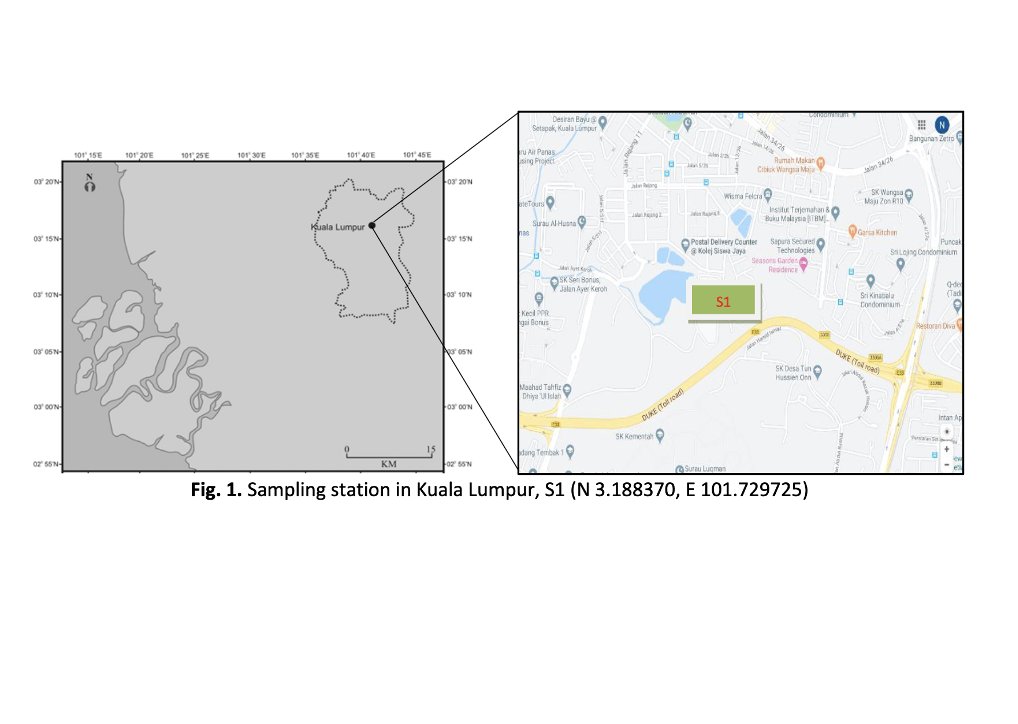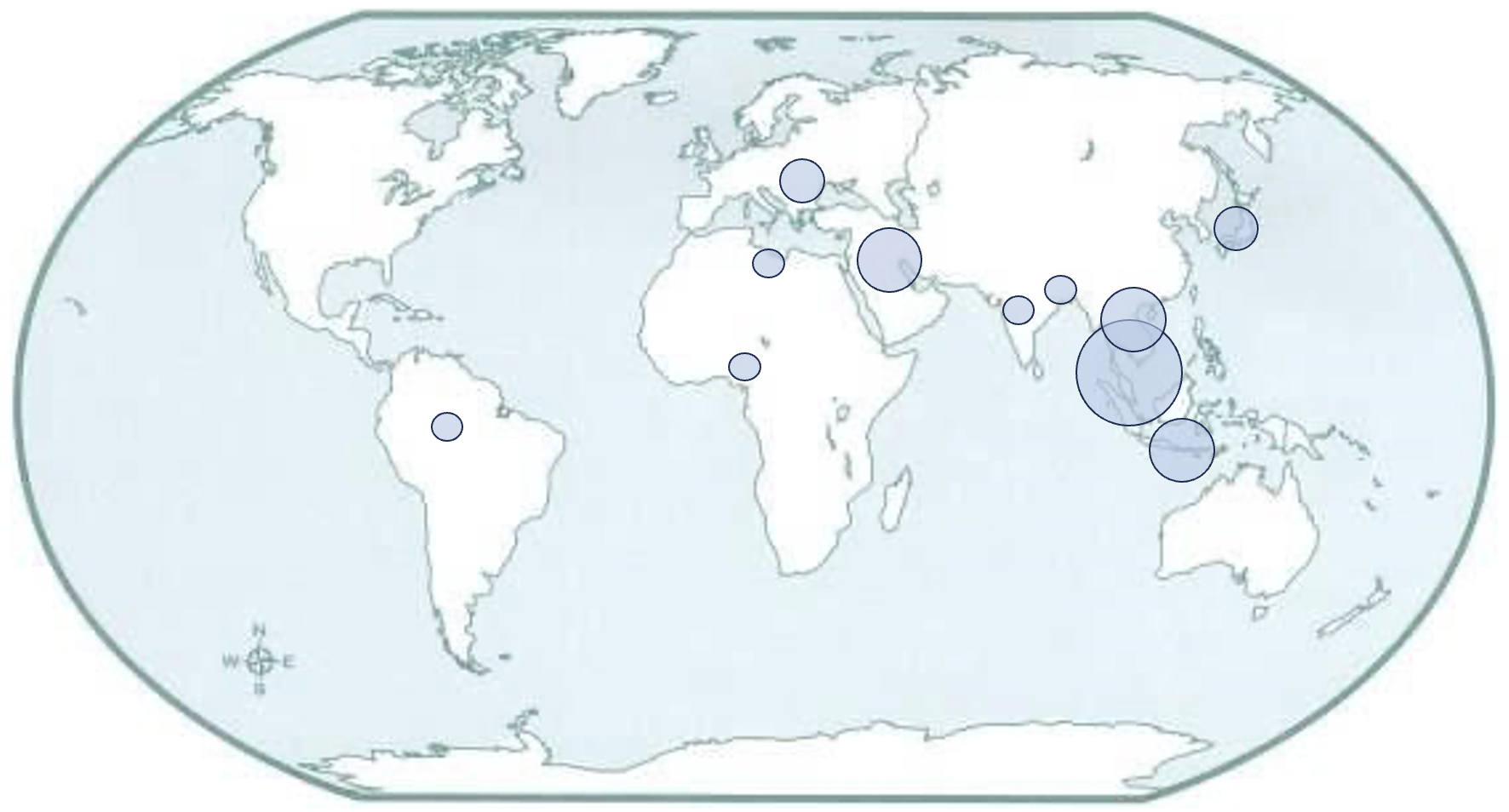Surfactants and Microbial Aerosol of Urban Particulate Matter (PM10) in Kuala Lumpur City Centre
DOI:
https://doi.org/10.37934/armne.16.1.6169Keywords:
Particulate matter, exhaust soot, urban area, bacteria, fungiAbstract
Surfactants in the atmosphere potentially influence the global climate and may affect human health. This study aims to determine the compositions of surfactants extracted from urban particulate matter (PM10) and motor vehicle exhaust soot. In addition, microbial aerosol was also determined. A high-volume air sampler (HVAS) has been used to collect PM10 samples in Kuala Lumpur urban area. Meanwhile, the vehicle exhaust soot was collected randomly from the exhaust pipes of various types of diesel and petrol vehicles, using a soft brush during dry days. The concentration of anionic surfactants as Methylene Blue Active Substances (MBAS) was determined by the colorimetric method using a UV-Vis Spectrophotometer. The presence of microorganisms such as bacteria and fungi were investigated by colony count. In addition, the correlation between surfactants and traffic-related air pollutants has also been investigated. Results revealed that the average concentration of MBAS in particulate matter is 107.68 ± 7.91 µgm-3. Diesel vehicles demonstrated higher surfactant concentration in exhaust particulate matter with an average value of 0.227 ± 0.006 µmolg-1 compared to petrol vehicles (0.146 ± 0.003 µmolg-1). Based on this study, various mitigation procedures can be implemented to reduce the impacts of PM and exhaust soot for a better future.









